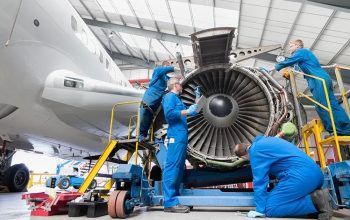
Turbine seals are not just for keeping air or steam where it should be; they build pressure profiles, protect components, and affect plant heat rate. For plant engineers and operators, a small decision around sealing can create megawatts out of fuel expenditures and maintenance intervals. In this article, we discuss modern sealing practices and how they can be translated directly to operating benefits.
What Is Turbine Sealing?
Turbine sealing is the set of methods used to manage internal leakage between rotating and stationary parts so that the working fluid goes through the blades and not around them. Labyrinth seals featuring teeth then reduce leak areas, and brush seals use metal bristles that are tightly packed for a compliant seal. Honeycomb or abradable (https://www.sciencedirect.com/topics/engineering/abradable-seal) liner seals are used with labyrinth or brush seals for minimizing rub damage and allowing the tightest running clearance.
Good sealing is more than a composition choice; it is a combination of materials, spacing, surface finish, and alignment processes that maintain those conditions while accounting for thermal expansion and rotor dynamics. Many plants also treat sealing selection and sealing clearance optimization during outages to ensure durable results.
The Link Between Leaks and Efficiency
Any fluid that gets past the blade path is doing no useful work and it is utilizing compressor power (in gas turbines) or it reduces available stage enthalpy (in steam units). This scenario creates a parasitic loss considered on the basis of fuel going through a MWh through the machine and creates a reduced with triggering condition to the limits of operating the machine. If the seal upgrade is successful, it is often a lever for heat rate Improvements due to reduced recirculation and recovering pressure at the areas of most influence.
Once the specific baseline testing is provided, and engineers have finalized on the areas where leakage is affecting performance, they typically still select a few high-impact seal improvement areas:
- Turbine discharge and interstage seals that are plate restricted stage-to-stage pressure ratios and isentropic efficiency.
- Seals that are restricted hot gas ingestion over compressor discharge casing and wheel-space that reheats cooled cavities.
- Typical tip and shaft-end seals where increasing clearance just slightly changes the overall leak area divided by the 2 HR.
- Extraction and balance-piston seals on steam turbines, directly on steam path efficiency.
How Seals Cut Fuel Expenses

Seals reduce fuel use in general by recovering pressure drop across the blade rows, which results in more work extracted from the kg of working fluid. The greater the fluid, the better the airfoils establish flow, the lower the firing temperature, and/or fuel flow to provide the same output power.
Plants also see second order savings; cooler components last longer, reduced cooling air requirements, and kinder starts on load equipment. Brush seal retrofits are often one of the standard methods because the flexible bristles can accommodate rotor motion and provide a tighter effective clearance than many fixed rigorous designs. Learn more at this page.
For older fleets, labyrinth seals and abradable liner upgrades are often measured as alternative seal designs and provide the current performance with no significant design changes to the case. Integrated field services—inspection, measurement, and precision machining—substantiate the control of the modeled fuel savings at site conditions for the component upgrades.
Common Sealing Challenges in Gas Turbines
Real turbines live with thermal gradients, case rounding, and transient rubs. This wear ultimately opens clearances and creates leakage paths just as operators are looking for peak output. Fixing these issues at the source necessitates good as-found data and specific repairs—not jumping straight to switching the parts out. Forcing operators to choose trouble spots during outages prevents spending time chasing symptoms during the next run.
Specific issues and how teams deal with them include:
- Wear on teeth and liners from rub: minimized with rub-abradable coatings or controlled break-in.
- Misalignment and ovality: addressed with outage services for measuring bores, case rounding, and tuning shims.
- Transient growth at startup: mitigated with sealing material selection tolerable to differential expansion, fills and warm-up ramp balancing.
- Filtration and contamination: managed with filters and practice with borescope inspection that promotes healthy seal land finishes.
Properly Real-World Benefits of Proper Sealing
Facilities that treat sealing of work part of the total upgrade – component selection, tolerancing, and installations quality and overall work quality. Generally, the result is lower specific fuel consumption and better emissions compliance at the same load. The results double as with other reliability improvement projects, because better sealing levels temperatures and ingesting can shorten parts life. Field experience varies by unit and conditions; however, the overall trending is similar; less leakage, more add useful work, and less unplanned corrections during the run.
After that, good condition monitoring interventions and disciplined outage practices, sealing projects can evolve in quiet profit centers – small parts and precise clearances without cost of fuel and not risking asset protection. For steam fleets, similar discipline over balance-piston and interstage locations retains steam path efficiencies for the period and keeps operators at a safe distance from their output targets.




